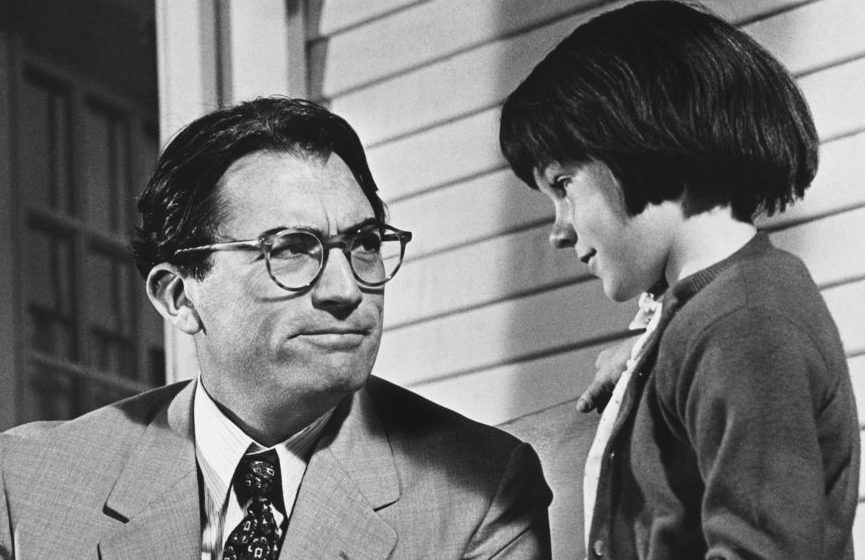At first glance, Greta Gerwig’s highly anticipated Margot Robbie-led film Barbie appears to transport audiences to a glossy, picture-perfect plastic dream world befitting the iconic Mattel doll. However, production designer Florencia Martin has revealed her team surprisingly drew visual inspiration for the sets from acclaimed classics like Alfred Hitchcock’s thriller Psycho and Harper Lee’s sobering To Kill a Mockingbird.

Martin indicated such unlikely darker influences lent a subtle eerie and surreal undertone to the superficial cheerfulness of Barbie’s reality. And a courthouse backdrop invoked To Kill A Mockingbird’s racist judiciary as a metaphor for oppression Barbie rebels against, hinting at somber subtext beneath the glitter.
Alfred Hitchcock’s Stylish Ominous Black-and-White Palette Inspired Barbie’s Environment
According to Florencia Martin, a key stylistic reference for the oddly disconnected perfection of the pink-hued world Barbie inhabits was the haunting black-and-white cinematography and production design of Hitchcock’s seminal horror film Psycho. She wanted to convey a similar sense of something slightly surreal and off-kilter lurking beneath the exterior.

“You have no idea if these dollhouses are gonna be in any way joined. How are they gonna act?”
Martin blended in aspects of the thriller’s striking but ominous aesthetic to lend faintly eerie undertones to Barbie’s reality, hinting that not everything is as bright as it outwardly seems in the plastic fantasy land. The goal was to craft Barbie’s world to feel a bit too inhumanly perfect.
The To Kill A Mockingbird Courthouse Backdrop Symbolized Oppression Barbie Rallies Against
Additionally, Martin indicated the prominent courthouse backdrop that features prominently in Barbie was deliberately designed and staged to evoke the racist Alabama courthouse from the cinematic adaptation of To Kill A Mockingbird. This served as a metaphor for systemic oppression that Barbie ultimately rebels against.

“Not that it’s real, but L.A. was a given. Even though we’re [British] outsiders, we kind of understood it. So it felt like at least we got something to get hold of because we had no idea what Barbie Land was going to be.”
The weighty nod to such a sobering source seems oddly at odds with the cheerful glossy image one associates with Mattel’s iconic doll. But Martin used the reference to subtly reinforce Barbie’s awakening social consciousness and activism under her sparkly facade.
Greta Gerwig Focused on Crafting an Earnest Barbie World With a Hint of Darkness
However, Martin affirmed director Greta Gerwig remains primarily focused on shaping a loving exploration and celebration of Barbie as a cultural icon without heavy-handed subversion or cynicism. The goal was to thoughtfully root Barbie’s world with occasional glimpses of something darker lurking beneath while still emphasizing her uplifting empowering journey.

While Barbie is shaping up to honor the legendary doll with a fun modern feminist tale, Martin’s production design hints the glittering world may carry somber social undertones that both celebrate and subvert Barbie’s larger cultural symbolism.
While on the surface Barbie aims to plunge viewers into a bright, playful plastic wonderland befitting her moniker, the surprising influences of darker prestige films reveal potential depth beneath the glitter. The production design’s references to the visual tones of Psycho and social commentary of To Kill a Mockingbird suggest Greta Gerwig has crafted a layered world that deconstructs Barbie’s image just as much as it pays joyful homage. Audiences may find Mattel’s icon inhabits a realm filled with eerie perfection, rebellion against oppression, and feminism shining through the pink hues.
Source: IndieWire

